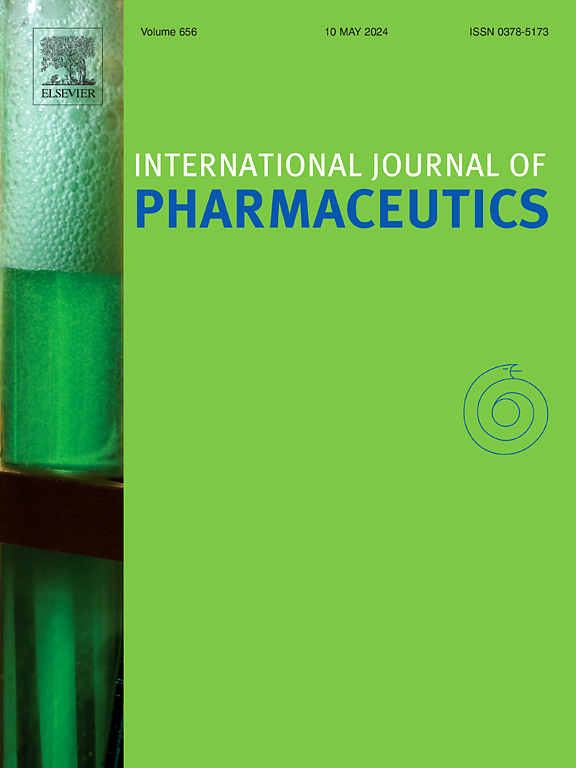Comparative analysis of tablet dissolution behavior: Batch vs. Continuous direct compression
IF 5.3
2区 医学
Q1 PHARMACOLOGY & PHARMACY
引用次数: 0
Abstract
Continuous manufacturing offers advantages over traditional batch methods, including agility, efficiency, and sustainability. However, transitioning to continuous manufacturing in process development is challenging due to the need for early adoption of industrial-scale equipment. Conversely, batch processes require extensive scale-up studies before commercialization, which continuous processes can avoid. A more efficient approach is to use batch trials in early development to design formulations and processes for continuous manufacturing, requiring assessment of their transferability.
This study compares the dissolution behavior of immediate-release tablets manufactured via batch and Continuous Direct Compression (CDC), using ibuprofen, a BCS Class II drug. A Design of Experiments (DoE) approach varied formulation properties and tensile strength, with three methods: i) similarity factor ([f2]), ii) Weibull model fitting and Partial Least Squares (PLS) regression, and iii) Gaussian Process Regression (GPR) to assess the transferability of batch trial data and dissolution models for CDC formulation and process design.
Dissolution profiles were identical between batch and CDC trials when formulations and tensile strength matched, with differences observed only due to deviations in actual tensile strength. The PLS model indicated minimal impact of operational modes on dissolution behavior. The GPR model based only on batch trial data predicted CDC dissolution profiles with a mean R2 of 0.910 and RMSE of 4.88%. Overall, the transferability analysis confirmed the predictive capacity of the developed model using batch trial data on the dissolution behavior of tablets manufactured via a CDC line.

求助全文
约1分钟内获得全文
求助全文
来源期刊
CiteScore
10.70
自引率
8.60%
发文量
951
审稿时长
72 days
期刊介绍:
The International Journal of Pharmaceutics is the third most cited journal in the "Pharmacy & Pharmacology" category out of 366 journals, being the true home for pharmaceutical scientists concerned with the physical, chemical and biological properties of devices and delivery systems for drugs, vaccines and biologicals, including their design, manufacture and evaluation. This includes evaluation of the properties of drugs, excipients such as surfactants and polymers and novel materials. The journal has special sections on pharmaceutical nanotechnology and personalized medicines, and publishes research papers, reviews, commentaries and letters to the editor as well as special issues.

 求助内容:
求助内容: 应助结果提醒方式:
应助结果提醒方式:


